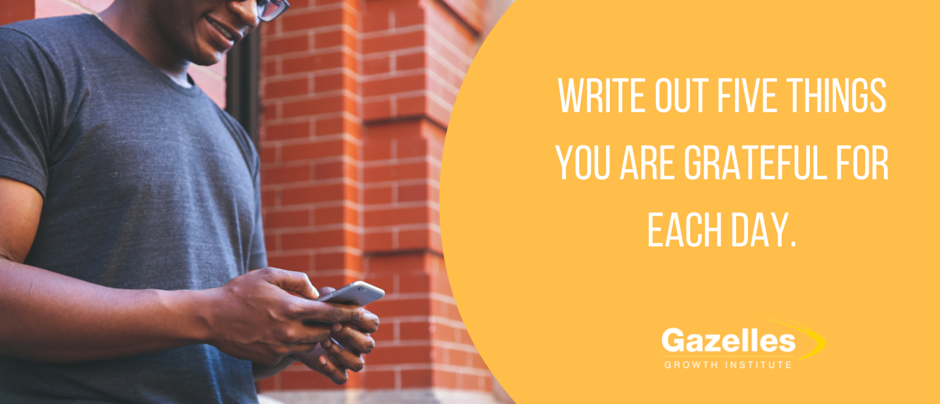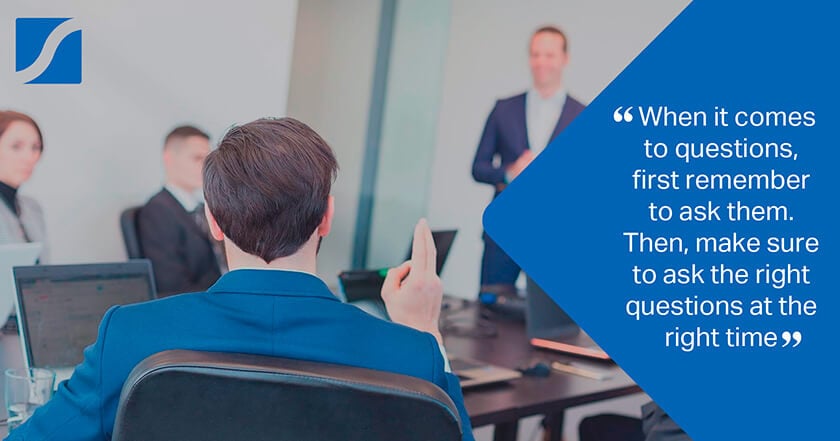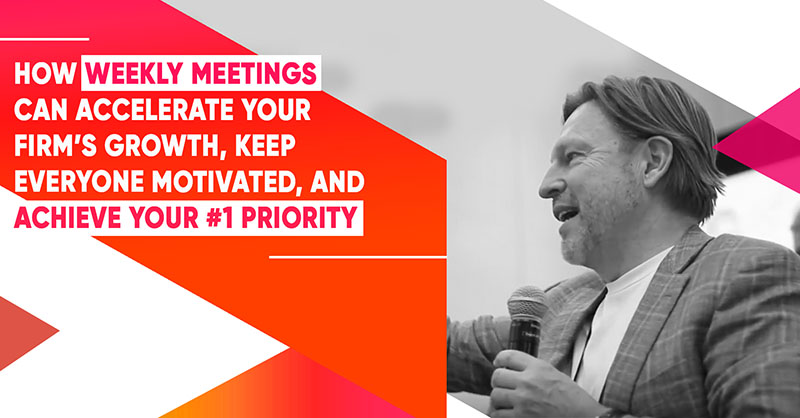Get High Before Every Meeting

This is an excerpt from Dave's new book, The Art of People: 11 Simple People Skills That Will Get You Everything You Want. Order your copy now!
“Why am I always so negative?” Andy wondered aloud to me.
I was coaching Andy for a presentation to our Entrepreneurs’ Organization forum, and he was very upset. Andy is a fantastic real estate entrepreneur, a great father, and one of my closest friends. But he was right: He was often a negative thinker. We weren’t sure exactly why he could be such a downer, but we were both determined to help him become more positive. Then Andy came up with an excellent idea.
“I read that gratitude is a powerful way of changing your mindset,” he said, and it turns out that many great leaders have discovered the benefits of actively practicing gratitude: Cary Chessick, the founder and former CEO of Restaurant.com, used to motivate himself by writings out five things he was grateful for each day. Shawn Achor, a speaker and the author of the bestseller The Happiness Advantage, practices acts of gratitude every day to help train his brain to see the world in a more positive frame. Sheldon Yellen, the CEO of the billion-dollar company BELFOR, wrote of his habit of sending multiple thank you/birthday cards to his employees every day. Srikumar Rao, “the happiness” guru, author, and Columbia Business School professor, has written about the joy of having gratitude thoughts each night before going to bed.
“These super successful guys must be doing something right,” Andy said. Thus began our work in helping Andy become more grateful in order to become more positive at work and in life. Over the course of the next several weeks, Andy developed a routine to incorporate acts of gratitude and kindness into his life. Using me as his accountability partner, he began writing down and emailing me who and what he was grateful for as well as random acts of kindness he had performed each day.
At first my role in Andy’s self-improvement project was that of coach, someone to guide him and keep him accountable, but a funny thing happened: As Andy’s gratitude was quickly making him a happier and more positive person, I began to get awfully jealous. Now, to be honest, I’ve been fortunate to not suffer much from negative thinking, as so many people around me have. But nonetheless, I was envious of what Andy was getting out of the practice of gratitude. At the same time, I was inspired.
Under the pretense of supporting my friend Andy in his mission, I began to practice gratitude. I started by writing handwritten thank you cards, first one a week, then one a day, and then three per day, in the morning on my commute to work. I soon found that if I was in a bad mood, the act of feeling grateful made me feel better. I found that if I was already in a good mood, the act of gratitude made me feel great. And I found that if I was in a great mood, the act of experiencing gratitude made me feel ecstatic. I was feeling better than I had in ages and wanted more, and so I decided that my whole family would share each night at the dinner table one person we were grateful for that day. This, too, felt great and, as if I were an addict searching for a better and better high, left me wanting even more. Finally, I adopted Srikumar’s practice of thinking grateful thoughts each night in bed just before I went to sleep.
I’ll let you in on a little secret: For better or for worse, I’ve never done drugs. (To be clear, I’m no angel; it’s just that drinking and gambling were my vices of choice in my wayward youth.) However, although I don’t know what it feels like to be high on hard drugs, I do know that the high I get from gratitude is amazing. It’s so good that I now choose to take a hit whenever it’s convenient. If I’m about to give an important speech to my team, I’ll write a thank you card. If I’ve got a huge meeting with investors coming up, I’ll list or five things I’m grateful for. If I had a particularly rough day, I’ll be sure to go to sleep feeling as grateful as possible.
Your gratefulness affects your mood in a positive way, which in turn affects the people you’re leading and the people around you.
As you go about your day, each meeting and even each interaction you have can be a positive one, filled with vision and hope and contagious gratitude, if you embrace it as such.
Thanks to the leaders I’ve mentioned—Cary Chessick, Shawn Achor, Sheldon Yellen, and Srikumar Rao—and thanks to Andy Cohen and the coaching work I did with him, I literally get high on gratitude every day. And for that I’m grateful.
FAST First Action Steps to Take:
- Choose one of the gratitude activities in this chapter and write down your plan for making it happen in your life.
- Put your gratitude plan into action. Start small and work your way up, as making any habit routine is challenging. The good news is that if it’s as addictive for you as it’s been for me, you’ll be practicing more gratitude in no time.
- The next time you’re feeling down about something, try putting it aside for a moment and writing a thank you card to someone. It might transform your mood in an instant.
Above is an excerpt from my Dave's book, The Art of People: 11 Simple People Skills That Will Get You Everything You Want. Order your copy now!


